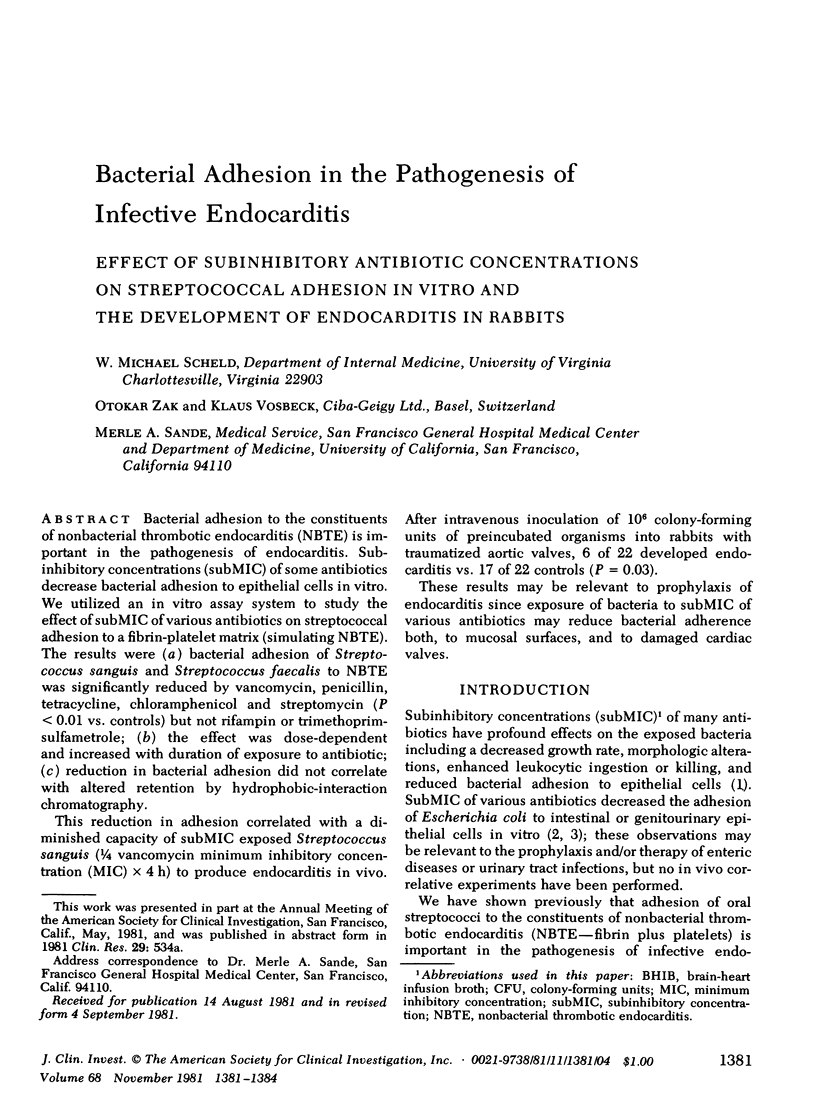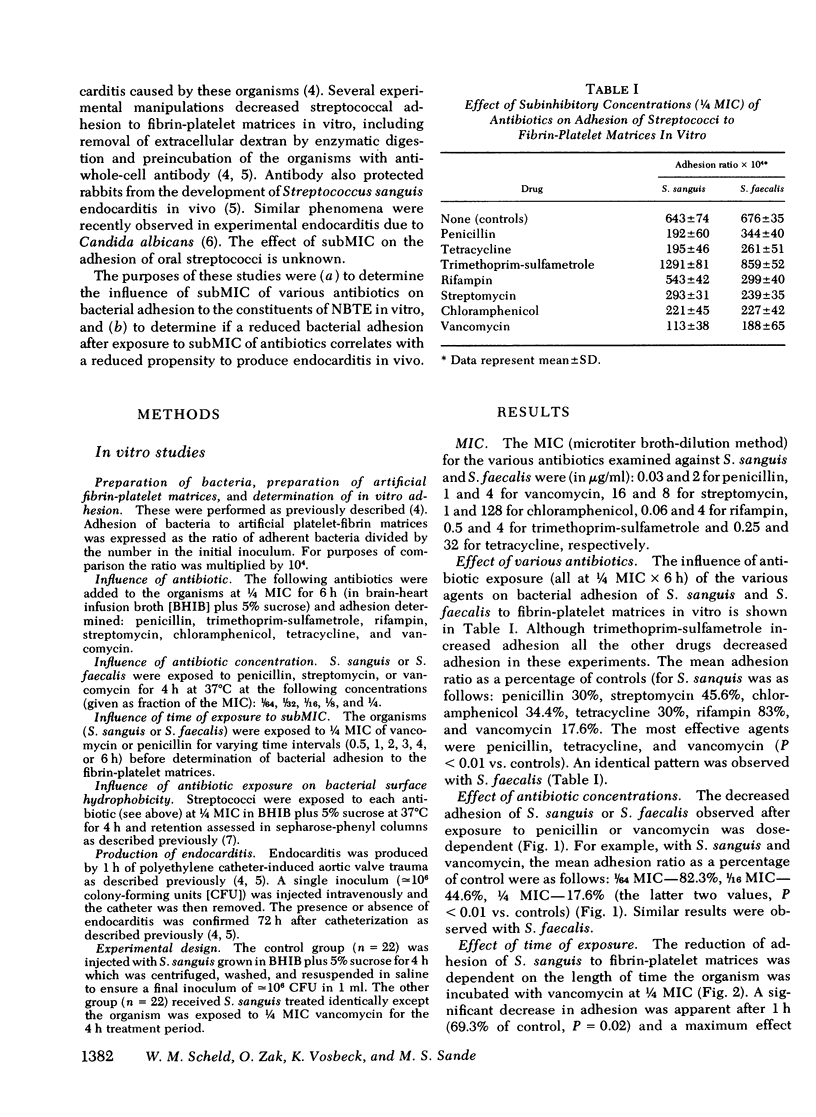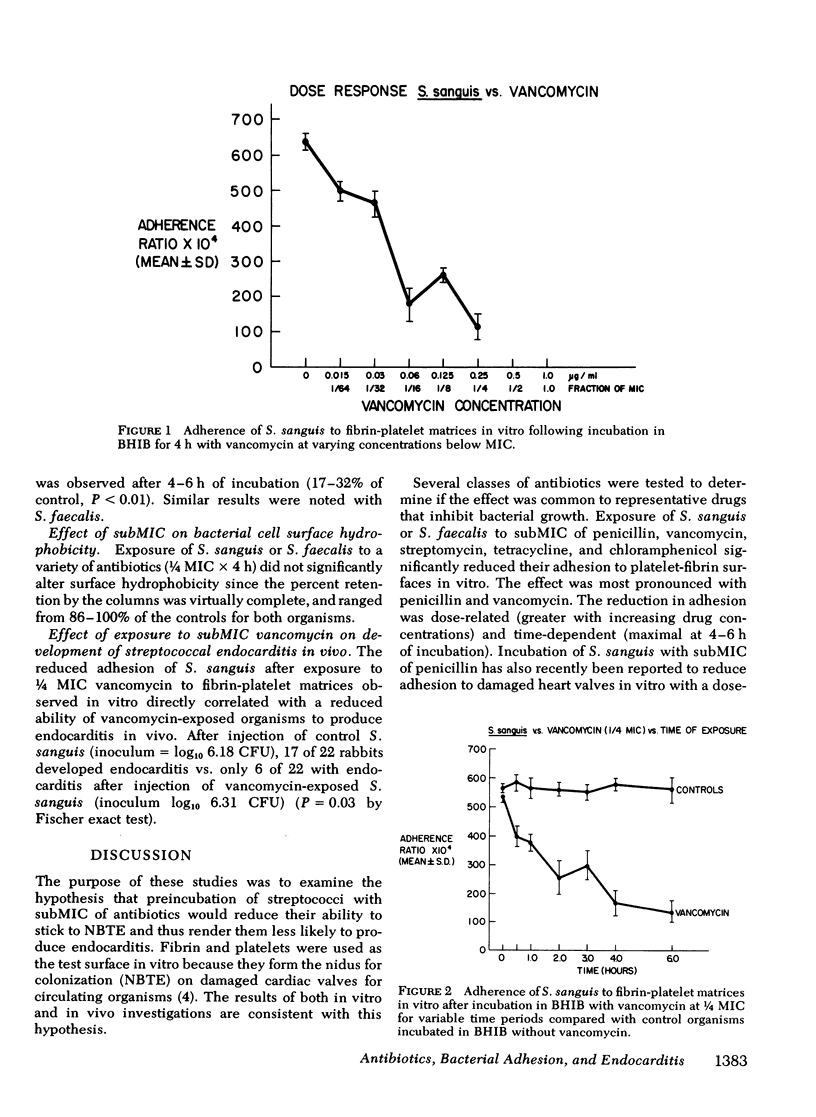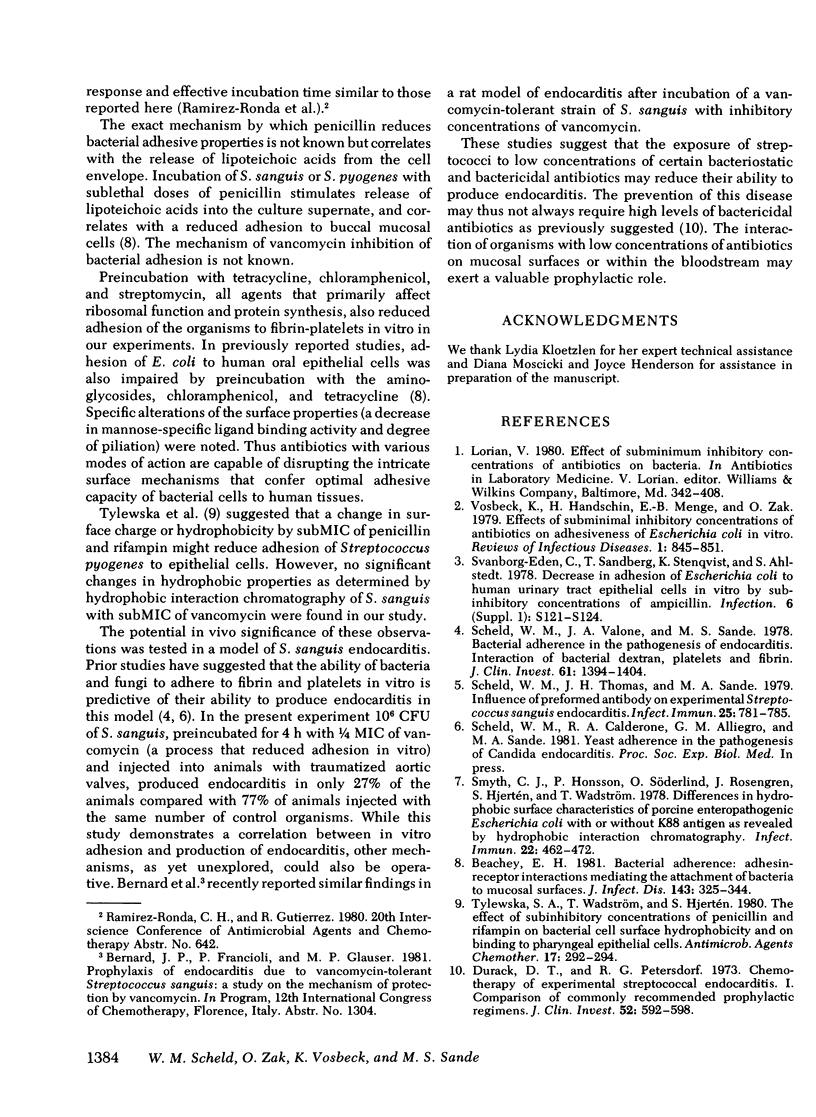Abstract
Bacterial adhesion to the constituents of nonbacterial thrombotic endocarditis (NBTE) is important in the pathogenesis of endocarditis. Subinhibitory concentrations (subMIC) of some antibiotics decrease bacterial adhesion to epithelial cells in vitro. We utilized an in vitro assay system to study the effect of subMIC of various antibiotics on streptococcal adhesion to a fibrin-platelet matrix (simulating NBTE). The results were (a) bacterial adhesion of Streptococcus sanguis and Streptococcus faecalis to NBTE was significantly reduced by vancomycin, penicillin, tetracycline, chloramphenicol and streptomycin (P less than 0.01 vs. controls) but not rifampin or trimethoprimsulfametrole; (b) the effect was dose-dependent and increased with duration of exposure to antibiotic; (c) reduction in bacterial adhesion did not correlate with altered retention by hydrophobic-interaction chromatography. This reduction in adhesion correlated with a diminished capacity of subMIC exposed Streptococcus sanguis (1/4 vancomycin minimum inhibitory concentration (MIC) X 4 h) to produce endocarditis in vivo. After intravenous inoculation of 10(6) colony-forming units of preincubated organisms into rabbits with traumatized aortic valves, 6 of 22 developed endocarditis vs. 17 of 22 controls (P = 0.03). These results may be relevant to prophylaxis of endocarditis since exposure of bacteria to subMIC of various antibiotics may reduce bacterial adherence both, to mucosal surfaces, and to damaged cardiac valves.
Full text
PDF



Selected References
These references are in PubMed. This may not be the complete list of references from this article.
- Beachey E. H. Bacterial adherence: adhesin-receptor interactions mediating the attachment of bacteria to mucosal surface. J Infect Dis. 1981 Mar;143(3):325–345. doi: 10.1093/infdis/143.3.325. [DOI] [PubMed] [Google Scholar]
- Durack D. T., Petersdorf R. G. Chemotherapy of experimental streptococcal endocarditis. I. Comparison of commonly recommended prophylactic regimens. J Clin Invest. 1973 Mar;52(3):592–598. doi: 10.1172/JCI107220. [DOI] [PMC free article] [PubMed] [Google Scholar]
- Scheld W. M., Thomas J. H., Sande M. A. Influence of preformed antibody on experimental Streptococcus sanguis endocarditis. Infect Immun. 1979 Sep;25(3):781–785. doi: 10.1128/iai.25.3.781-785.1979. [DOI] [PMC free article] [PubMed] [Google Scholar]
- Scheld W. M., Valone J. A., Sande M. A. Bacterial adherence in the pathogenesis of endocarditis. Interaction of bacterial dextran, platelets, and fibrin. J Clin Invest. 1978 May;61(5):1394–1404. doi: 10.1172/JCI109057. [DOI] [PMC free article] [PubMed] [Google Scholar]
- Smyth C. J., Jonsson P., Olsson E., Soderlind O., Rosengren J., Hjertén S., Wadström T. Differences in hydrophobic surface characteristics of porcine enteropathogenic Escherichia coli with or without K88 antigen as revealed by hydrophobic interaction chromatography. Infect Immun. 1978 Nov;22(2):462–472. doi: 10.1128/iai.22.2.462-472.1978. [DOI] [PMC free article] [PubMed] [Google Scholar]
- Tylewska S. K., Wadström T., Hjerten S. The effect of subinhibitory concentrations of penicillin and rifampicin on bacterial cell surface hydrophobicity and on binding to pharyngeal epithelial cells. J Antimicrob Chemother. 1980 Mar;6(2):292–294. doi: 10.1093/jac/6.2.292. [DOI] [PubMed] [Google Scholar]
- Vosbeck K., Handschin H., Menge E. B., Zak O. Effects of subminimal inhibitory concentrations of antibiotics on adhesiveness of Escherichia coli in vitro. Rev Infect Dis. 1979 Sep-Oct;1(5):845–851. doi: 10.1093/clinids/1.5.845. [DOI] [PubMed] [Google Scholar]


